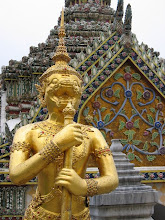| The enlighten One "Buddha" and "Gautama" redirect here. For other uses, see Buddha (disambiguation) and Gautama (disambiguation).
Gautama, also known as Śākyamuni ("Sage of the Śākyas"), is the primary figure in Buddhism, and accounts of his life, discourses, and monastic rules are believed by Buddhists to have been summarized after his death and memorized by his followers. Various collections of teachings attributed to him were passed down by oral tradition, and first committed to writing about 400 years later........read more at wikipedia REF:wikipedia | ||||||||||||||||
-
-
-
-
Medation on Dec 17 on 2011
love to everyone
-
Monks and novices are Going for hunch during the Meditation on 17, DEC,2011
everyone like beautiful
wibiya widget
Labels
- Articles (4)
- books (3)
- Dhamma (2)
- Education (4)
- entertainment (3)
- MUSIC (3)
- news (11)
- Philosophy (4)
- photo news (1)
- song (1)
- video (9)
Blog Archive
-
▼
2011
(40)
-
▼
May
(21)
- world war movie
- Всадник по имени смерть
- Mindsight
- Please watch full movies, Sam & Janet
- Mysteries of Jerusalem - Stairway to Paradise
- Man of Pain - The Holy Shroud
- Christ - The Spiritual Message for the Next Millen...
- Daughter from Danang
- lovingkindness
- Dhamma talk
- famous songs 2011
- မဲေဆာက္ျမိဳ့မွ စိတ္၀င္စားဖြယ္ရာ သတင္းတစ္ပုဒ္
- ္fri
- http://swesonelin.blogspot.com/
- CONCURSO DE AUDITION LATINO
- no need to say good bye
- Song
- THE BUDDHA HISTORY
- Eastern philosophy
- Contemporary philosophy
- Modern philosophy
-
▼
May
(21)
Followers
philosophy
Total Pageviews
Monk Students

Friendship
film-z
WORLD NEWS
friendship
i like
like webs
New Associate Tools

|
Earn advertising fees on Kindle books, Kindle devices and more. Visit the new Kindle landing page to learn how. |
|
|
Use Blogger's built-in tools to easily add relevant products to your blog. |
|
|
Use the Share on Twitter feature on Site Stripe to post links from Amazon |
ေလးစားခင္းမင္းအပ္ပါေသာ မိတ္ေဆြးမ်ားကို...........
Powered by Blogger.
Popular Posts
-
Saturday, June 4, 2011 “အားလံုးပဲ ေဟာင္းႏြမ္းလြန္းလို႔ အသစ္က ျပန္စၾကစို႔” ေဆာင္းပါးႏွင့္ သက္ ဆိုင္သည့္ “လူထုနဲ႔ ေဒၚေအာင္ဆန္းစုၾကည္” အစီအ...
-
Friday, June 17, 2011 ျမန္မာ့ေရးရာ သတင္းပေဒသာ (၁၇-၆-၂၀၁၁) - အာရပ္ဒီမိုကေရစီေရး ဆႏၵျပပြဲမ်ိဳး ေပၚမေပၚ အစိုးရအေပၚမွာ မူတည္ click -...
-
- စကားလံုးမ်ား အီဒီယမ္ ေခတ္ေပၚ ၿမန္မာ 2 0 Rate T...
-
In the West, the term Eastern philosophy refers very broadly to the various philosophies of "the East," namely Asia, including Chi...
-
Female Bodybuilding Addicts I had no idea women's muscles could get as large as men's until I saw a few of these photos....
-
Maria Jose Cristerna, Mexican Vampire Woman Smackzy on 09 27 11 in Photos Maria Jose Cristerna became the ‘Most Unusual...
-
Top 10 Malaysian Women News in 2011 From Ambiga to the Obedient Wives Club, we take a look back at news involving Malaysian women...
-
ဖြ႔ံၿဖိဳးၿပီးႏိုင္ငံမ်ားတြင္ လြန္ခဲ့ေသာႏွစ္ ၅၀ ထက္ တကၠသိုလ္ဘြဲ႔ရဦးေရ ၂၀၀ ရာခိုင္ႏႈန္းထိ ျမင့္တက္လာခဲ့ေၾကာင္း OECD ၏ထုတ္ျပန္ခ်က...
About Me
Popular Posts
-
Saturday, June 4, 2011 “အားလံုးပဲ ေဟာင္းႏြမ္းလြန္းလို႔ အသစ္က ျပန္စၾကစို႔” ေဆာင္းပါးႏွင့္ သက္ ဆိုင္သည့္ “လူထုနဲ႔ ေဒၚေအာင္ဆန္းစုၾကည္” အစီအ...
-
Friday, June 17, 2011 ျမန္မာ့ေရးရာ သတင္းပေဒသာ (၁၇-၆-၂၀၁၁) - အာရပ္ဒီမိုကေရစီေရး ဆႏၵျပပြဲမ်ိဳး ေပၚမေပၚ အစိုးရအေပၚမွာ မူတည္ click -...
-
- စကားလံုးမ်ား အီဒီယမ္ ေခတ္ေပၚ ၿမန္မာ 2 0 Rate T...
-
In the West, the term Eastern philosophy refers very broadly to the various philosophies of "the East," namely Asia, including Chi...
-
Female Bodybuilding Addicts I had no idea women's muscles could get as large as men's until I saw a few of these photos....
-
Maria Jose Cristerna, Mexican Vampire Woman Smackzy on 09 27 11 in Photos Maria Jose Cristerna became the ‘Most Unusual...
-
Top 10 Malaysian Women News in 2011 From Ambiga to the Obedient Wives Club, we take a look back at news involving Malaysian women...
-
ဖြ႔ံၿဖိဳးၿပီးႏိုင္ငံမ်ားတြင္ လြန္ခဲ့ေသာႏွစ္ ၅၀ ထက္ တကၠသိုလ္ဘြဲ႔ရဦးေရ ၂၀၀ ရာခိုင္ႏႈန္းထိ ျမင့္တက္လာခဲ့ေၾကာင္း OECD ၏ထုတ္ျပန္ခ်က...



















0 comments:
Post a Comment